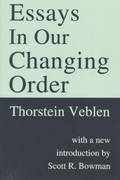Question
The Iranian government has adopted an expanded fiscal and monetary policy. This has increased consumption, investment, and production in the economy. The global economy tends
The Iranian government has adopted an expanded fiscal and monetary policy. This has increased consumption, investment, and production in the economy. The global economy tends to be seriously hit by the COVID-19 pandemic. Iran's economy has witnessed the tightness of economic vitality. Consumption expenditure, investment, and production activities are decreasing. The Iranian government has adopted various fiscal and monetary policies to bring about economic stability and restore the economy from the adverse effects of infectious diseases. The government has adopted an expanded fiscal policy in a way that increases government spending and reduces taxes. The Iranian government has increased spending on social security benefits, unemployment benefits, and food security. For example, the economy was fully employed before the epidemic, expansionary fiscal policy helped increase the aggregate demand of the economy, and government spending on the healthcare sector also increased tremendously. The central banking system also adopted an expansionary monetary policy, which increased the economy's monetary supply while increasing the economy's interest rate, and reduced the burden of borrowing due to interest rate cuts. Therefore, borrowing and investment in the economy have increased. This affected economic spending, which helped revive the Iranian economy as the epidemic had a serious impact on spending. According to(www.fildisiajans.com.tr, n.d.) Iranian President says severe restrictions will apply in several cities due to the spread of pandemics in the country. According to this comprehensive plan, three levels of red, orange, and yellow are defined for cities and metropolitan areas, all other ancillary tasks are "closed" except for the most essential ones when the city is at warning level (issue color status). Urban restrictions have allowed the spread of COVID-19 to be reduced even a little, but restrictions have been introduced at a time when Iran's employment worsens and millions of people lose their jobs, which is causing more and more people to lose their jobs. However, according to (Beck and Hoseini, 2020), Iran has implemented an emergency loan program, the government announced that eligible households can apply for emergency loans (54% of the minimum wage). Loans are based on monthly cash transfer qualifications paid by the government to all Iranians aged 18 or older who are supported by oil income except for the top 5% income earners. Loans will be repaid through future cash transfers from July to August 2020. Of the 25.6 million Iranian households, 24.2 million are eligible for cash transfers this month, of which 21 million have applied for loans. Loans were paid in four stages: 17.1 million on April 23, 2.3 million on April 30, 775,000 on May 7, and 867,000 on June 11. So it's more than 80% of 83. According to (Calabrese, 2021), the Rouhani government has allocated about 100 billion tomans to mitigate side effects of the outbreak. About 25% were paid directly for the treatment of outbreaks, including additional payments for medical workers, medicines and medical equipment. In addition, the government paid an additional 12.6 billion tons ($360 million at the official exchange rate) to the unemployment insurance fund to strengthen employment insurance introduced in 1990 to alleviate the adverse impact on the labor market. There is also a part for the general public and the poor with "transfer payments and loans" and for the companies that suffered the most from the outbreak. Since economic sanctions began, Iran's economy has deteriorated seriously and the outbreak has also become more severe. Except for these policies, Iran continues to implement various policies to alleviate the serious situation caused by COVID-19.
I wrote the economic policies and theories ( fiscal and monetary policies ) about Iran.
Q. You are required to review how effective the economic policies and theories have been implemented by Iran, using appropriate diagrams analysis. Your diagrams analysis may include: Aggregate Demand and Aggregate Supply or The Keynesian Income and Expenditure Model: The open economy or The Market for Money (Money Demand and Money Supply). Must be interpreted and discussed. The report is related to the how effectiveness of the Iran has used economic policies and theories to overcome the Covid-19 impacts in their respective country. The discussion must be supported with diagrams analysis based on fiscal and monetary policies.
Step by Step Solution
There are 3 Steps involved in it
Step: 1

Get Instant Access to Expert-Tailored Solutions
See step-by-step solutions with expert insights and AI powered tools for academic success
Step: 2

Step: 3

Ace Your Homework with AI
Get the answers you need in no time with our AI-driven, step-by-step assistance
Get Started


